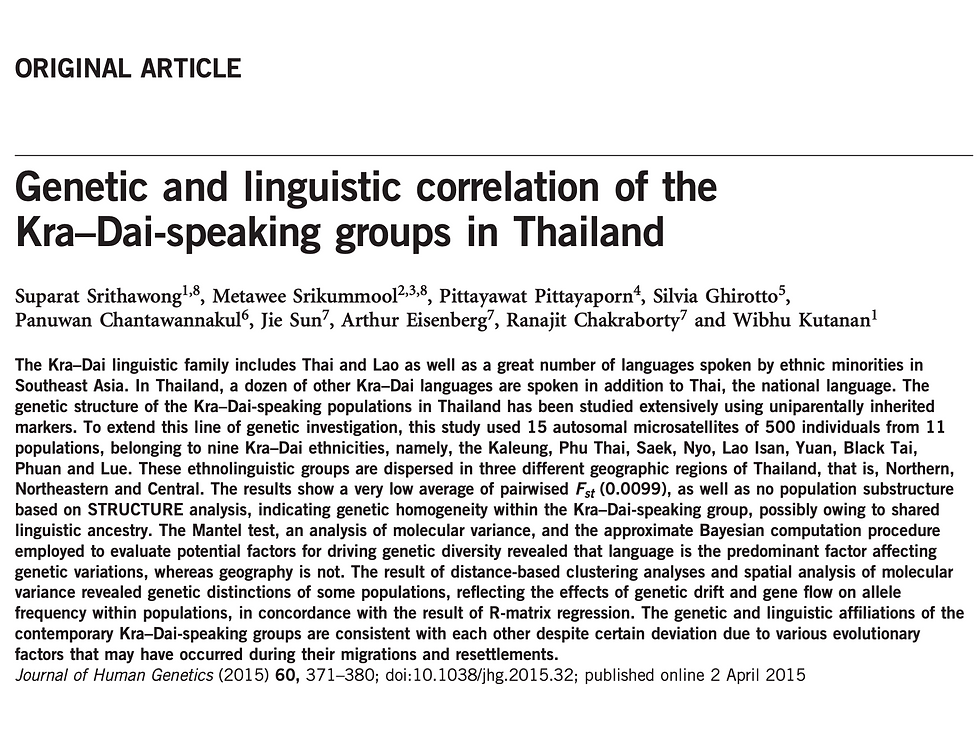Genetic and linguistic correlation of the Kra Dai-speaking groups in Thailand
- Nonglak Prakhun
- 23 ธ.ค. 2566
- ยาว 2 นาที
Suparat Srithawong, Metawee Srikummool, Pittayawat Pittayaporn, Silvia Ghirotto, Panuwan Chantawannakul, Jie Sun, Arthur Eisenberg, Ranajit Chakraborty and Wibhu Kutanan
บทคัดย่อ
The Kra-Dai linguistic family includes Thai and Lao as well as a great number of languages spoken by ethnic minorities in Southeast Asia. In Thailand, a dozen of other Kra-Dai languages are spoken in addition to Thai, the national language. The genetic structure of the Kra-Dai-speaking populations in Thailand has been studied extensively using uniparentally inherited markers. To extend this line of genetic investigation, this study used 15 autosomal microsatellites of 500 individuals from 11 populations, belonging to nine Kra-Dai ethnicities, namely, the Kaleung, Phu Thai, Saek, Nyo, Lao Isan, Yuan, Black Tai, Phuan and Lue. These ethnolinguistic groups are dispersed in three different geographic regions of Thailand, that is, Northern, Northeastern and Central. The results show a very low average of pairwised F(st) (0.0099), as well as no population substructure based on STRUCTURE analysis, indicating genetic homogeneity within the Kra-Dai-speaking group, possibly owing to shared linguistic ancestry. The Mantel test, an analysis of molecular variance, and the approximate Bayesian computation procedure employed to evaluate potential factors for driving genetic diversity revealed that language is the predominant factor affecting genetic variations, whereas geography is not. The result of distance-based clustering analyses and spatial analysis of molecular variance revealed genetic distinctions of some populations, reflecting the effects of genetic drift and gene flow on allele frequency within populations, in concordance with the result of R-matrix regression. The genetic and linguistic affiliations of the contemporary Kra-Dai-speaking groups are consistent with each other despite certain deviation due to various evolutionary factors that may have occurred during their migrations and resettlements.

อ่านบทความเพิ่มเติม



Comments